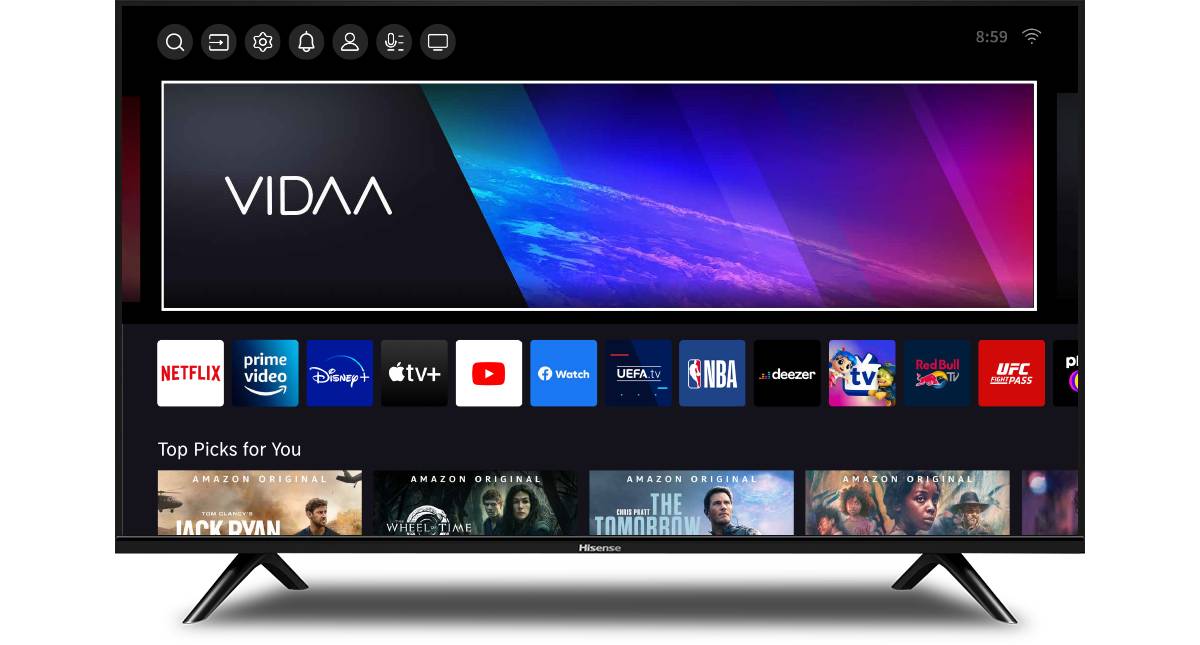 As more streaming companies enter the advertising market, the battle for eyeballs and ad dollars has never been more competetive. Publica, an ad server owned by IAS, argues that in order to attract ad dollars, you need to retain viewers – and in order to retain viewers, you need to ensure a seamless ad experience.
As more streaming companies enter the advertising market, the battle for eyeballs and ad dollars has never been more competetive. Publica, an ad server owned by IAS, argues that in order to attract ad dollars, you need to retain viewers – and in order to retain viewers, you need to ensure a seamless ad experience.
In tandem with the company’s new white paper on the topic, VideoWeek asked Paul Gubbins, VP, CTV Strategy & Marketing at Publica by IAS, what CTV publishers need to think about when building their ad breaks.
Given all the new entrants vying for ad spend, how can CTV publishers differentiate themselves in the eyes of advertisers?
It feels like every other month, there is another streaming service launching – be that a FAST channel, a new AVOD app, or an ad-supported tier of one of the big SVOD platforms. So there isn’t a shortage of environments anymore for advertisers to target. If we take a step back and look at three or four years ago, there were really only a handful of streaming services that were truly ad-supported and had scale. But in 2024, the addressable CTV inventory landscape is growing exponentially. So if those services want to attract ad budgets, they really do have to think about how they pass data in a transparent way, in a privacy-compliant way. But also in the types of targeting parameters that they offer to their advertisers.
There are lots of traditional TV advertisers that are now trying to test CTV, but they expect the same sorts of targeting parameters that they’ve had for many years in traditional television. But also the growing number of digital advertisers that are coming into CTV expect a whole multitude of granularity in their CTV buys. So you’ve got a whole multitude of streaming services that have to start thinking, how do we cater for traditional TV advertisers? How do we also cater the growing number of data-savvy programmatic-first ad buyers that also want to target streaming audiences?
What impact does optimising CTV ad breaks to increase yield have on streaming audiences?
Everybody wants to grow their audience. But TV viewers are no longer tolerating a bad ad break experience. Again, if we take a step back several years ago, there was limited choice. But today if you’re an AVOD or FAST service, you’ve only got a few opportunities before your user turns off your service and goes elsewhere. So even though they might be leaned into the content, if the ad break keeps crashing, keeps showing them ads in the wrong language, or keep showing them really loud ads, or keep bombarding them with the same ad back to back, chances are most people are going to switch over to an alternative service. So it’s really important for those streaming publishers to be thinking about those two dynamics. How do we pass everything in a privacy-compliant way, as much as possible? But also how do we create that linear-like and seamless viewing experience for our end customers? Because if they get that wrong, it’s the quickest way in which they can lose audiences.
What is the value of contextual targeting in a CTV environment?
As a streaming publisher, the more data that you can pass, again in a privacy compliant way, the easier it is for you to grow your overall yield. Advertisers have shown in digital that they’re prepared to pay a higher CPM or eCPM for inventory that comes with first-party data. If a publisher can surface contextual insights, that publisher can charge a higher price for the slots within their ad break. Contextual is a lever that a publisher can pull on the sell side to generate more yield from their ad pods. It’s better for targeting, but it’s also better for brand safety and brand suitability, because those on the buy side have a much better understanding around what’s actually happening within the show on a frame by frame basis. It’s not just understanding the channel, it’s not just understanding the show name. When you do contextual targeting properly in CTV, it’s about truly understanding what’s happening within each frame of that stream.
What role does first- and third-party data play in an effective CTV ad break?
A really important one – if we look through the optics of the UK and European landscape, more and more streaming publishers are supporting consent management platforms (CMP), and that enables them to obviously pass first-party data and facilitate targeted programmatic advertising in CTV. We’re also seeing a number of third-party data partners evolve and scale in the CTV ecosystem. So many advertisers are looking to target CTV inventory, which is privacy-compliant, and can pass TCF consent strings via CMPs. But you can also surface either PMPs or programmatic guaranteed (PG) deals that are rich in first- or third-party insights for those on the buy side to target. So we’re certainly seeing a lot more data in the addressable TV ecosystem. There’s still a healthy open marketplace, but a lot of what’s been traded in Europe over the last couple of years has predominately been deal-based in the form of PMPs or PG.
How else are CTV ad breaks evolving? Are we seeing more exclusivity deals in CTV buys?
Exclusivity rights would be an example of some of the rules and targeting the advertisers had for a number of years in traditional linear, that are now being made available in the CTV ecosystem as well. So again, for us, it’s all about how we bring the controls and transparency that linear TV ad buys have had, and all of the increased targeting capabilities that digital ad buyers have had, and basically converge those together. So if you’re a streaming service today, you can go knock on the door of traditional TV ad buyers and say, we can support all of the controls that you’ve had for many years in cable and broadcast. And they can also knock on the door of programmatic-first ad buyers, and say, we can give you all the granularity and targeting controls that you need, and that you’ve been used to for many years in digital programmatic ad buys.
What difference does selling advertising on a cost per second basis make from using a CPM model?
We reference that as intelligent ad pod construction. Again, it’s taking the best of monetisation practices that have evolved in traditional linear television, and applying those to an IP-delivered TV ecosystem. So if you’re a streaming service, think about how you can maximise your yield on a cost per second basis. So rather than sell in slots, ie. three slots fixed at 15 seconds, there may be a six-second, or a 20-second, that an advertiser is prepared to run at a higher yield. But unless you’re looking at each slot on a revenue per second basis in real time, there’s a high probability that you may end up leaving the highest-yielding pod that you can behind, because you’ve pre-fixed the time slots within your pod.
Does maximising your ad pod with a higher number of shorter slots pose a risk to the user experience?
A lot of that is determined by the publisher themselves. So Publica is the ad server, we provide tools and the ability to surface the data to enable that streaming publisher to generate maximum advertising revenue. But when it comes to ad load, and how much data is actually passed, that’s all at the discretion of the publisher. And what we’re finding at the moment is that some publishers are happy to pass more data. Others really want to own that themselves, because they don’t really want to give those on the buy side the ability to potentially cherry pick. Others are more susceptible to run a slightly heavier ad load because they feel that their content is super unique, and their audiences can’t get that elsewhere. It would be similar to saying how do you dictate how many ads are on a web page; it’s dependent on the publisher’s appetite. Some might have 101 different ads above and below the fold and units at the bottom, whereas others might say it’s just one MPU on a tenency basis. It very much depends upon the publisher’s appetite to grow yield, but also balance that with user experience.




